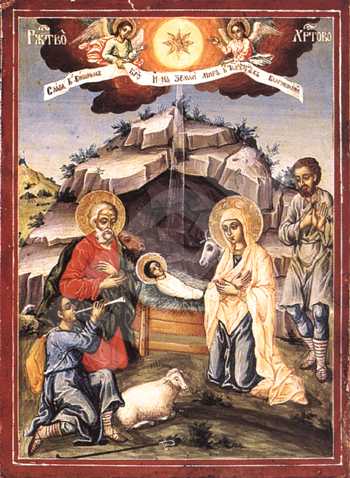The Nativity of Christ
Type:
Icon
Period:
The beginning of the
19 century
Toma Vishanov-Molera, born around 1750, painter of icons and murals, founder of the Bansko school of art. He grew up in the family of the clergyman Vishan. Around 1765 he went to Vienna, where he studied painting. It is not known who were his teachers there or when he returned to Bansko. His fellow villagers called him the Moler, Molera(from German Maler ‘painter’), whence the entire family's surname. Under the influence of the European 18th century art Toma Vishanov painted his works in a new manner, unknown until then in Orthodox art. The figures are realistic, vivid, expressive. Toma Vishanov is an innovator in the early period of Bulgarian Renaissance. His ideas on art were not understood and at first were rejected by his contemporaries. His work has not been studied extensively. He died after 1811 in Bansko.
Dimmensions (cm):
29
/ 21.5
/ 2.5
Location
Country: Bulgaria
Province: Blagoevgrad
Town: Bansko
Museum: Museum complex
Source
Country: Bulgaria
Province: Blagoevgrad
Town: Bansko
Church: St. Trinity
Description
The compositional treatment of the subject is the traditional one, the individual elements and the characters being represented by the painter according to the description in the Hermeneoses about the reproduction of that event. Painted in front of the entrance to the grotto are the figures of the Holy Mother of God and of Joseph the Righteous One. Between them, in a wooden manger, is the swaddled little figure of the infant Christ. Shepherds are standing at the sides of the Holy Family, playing their flutes and praising the great Nativity of the Saviour. Shining above the Holy Family is the star of Bethlehem. Painted on both sides, up above in the icon, are two flying angels. With one of their arms they are pointing at the star, and with the other hand they are holding a long roll with the inscription: "Glory to God in the highest, and on earth peace, good will toward men". The painting is fresh and colourful..
Iconographical technique: Tempera
The varnish cover is laid thinly and evenly.
Base material: Wood
The icon's base is a one-piece softwood panel. The ground coat is of plaster, laid in a thin layer.
State, restoration traces and comments
No prior restoration has been detected.


